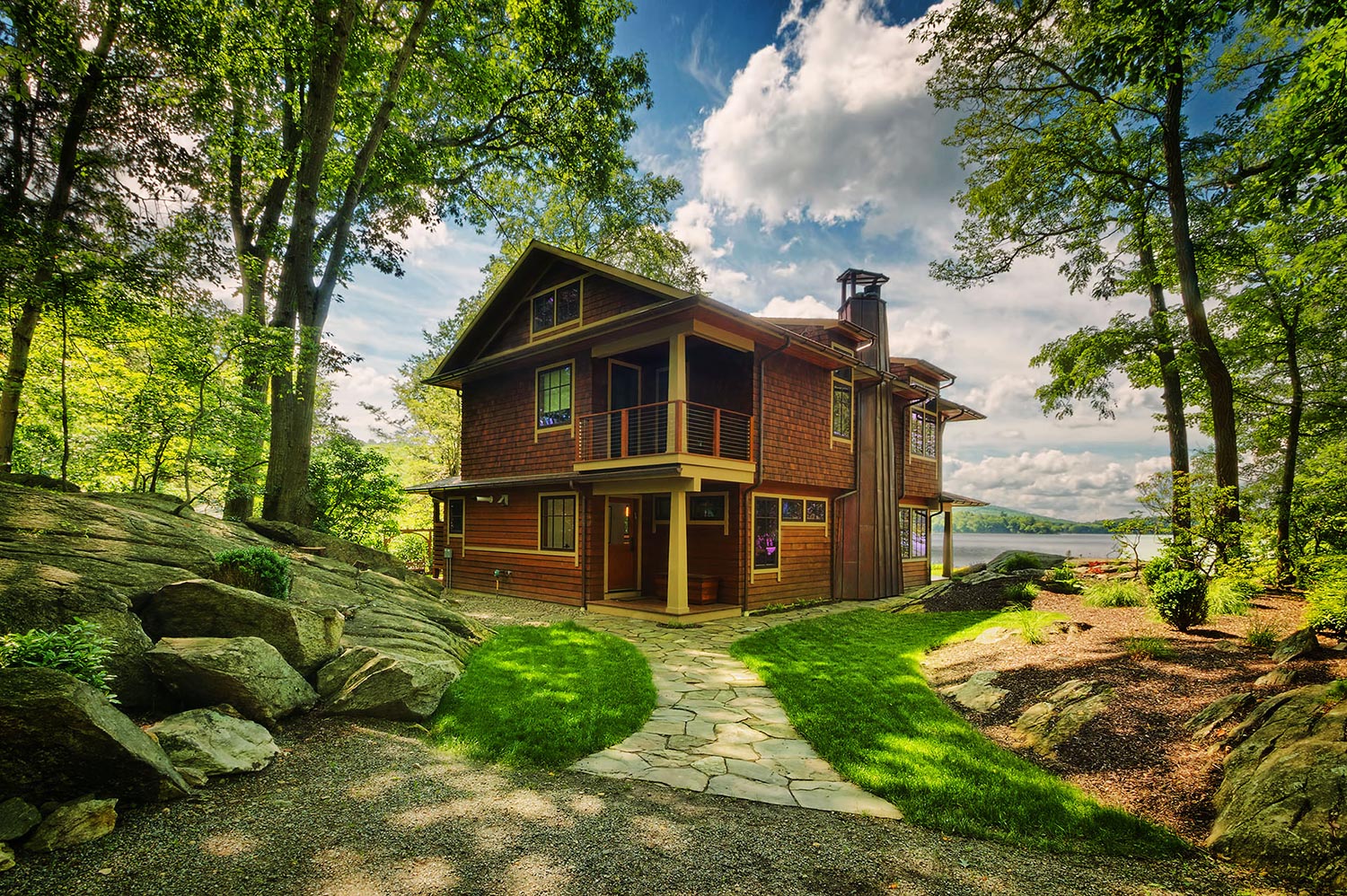Design Your Ideal Hudson Valley Retreat
“Pay tribute to your locale and your tastes using these tips from a Garrison architect.”
The Hudson Valley boasts dramatic terrain, swathed in lush foliage and forged by a storied river. The region’s historic buildings have just as much character as its landscape, says Jamie Copeland, the principal architect at Hudson Design, an architecture and construction management company in Garrison. He believes every home, new or old, should do its location justice. “Neighborhoods should have independent character from house to house,” he says.A sandy origin. “I got started in a sandbox,” Copeland says. His father, a partner at a lumberyard, built his son a gigantic sandbox where the budding architect built “not just castles but civilizations.” Sometimes these projects took all weekend to complete, even with a couple of “assistants” from the neighborhood working with Copeland from dawn until dusk. Come Sunday, the garden hose would unleash a deluge and the work would begin again. The turning point. Copeland stumbled across architecture as a subject while studying engineering at North Carolina State University. “I noticed my roommate having a lot more fun than me, so I asked him where he went until 2 a.m. every night,” he says.
The night owl led him to a building on the east side of campus full of studios where people were making structural models, furniture and murals. Copeland was captivated, submitted his portfolio and switched his degree to architecture.
Read Copeland’s tips below to dream up a home as arresting as the Hudson Valley.
1. Determine Your Expectations
Think about how you’d like your home to cater to your lifestyle; consider how you plan to entertain guests and enjoy yourself. “It’s important to understand the specific reasons a client is deciding to establish roots in this area, because that sets the road map for the entire project,” Copeland says.
His team converted the remnants of an old carriage house in Garrison into the country retreat seen here for clients who wanted an outdoor oasis. It features a spacious pool and entertaining area with plenty of room to plant wildflowers — the wife’s favorite blooms. The master bedroom looks out to the garden, offering a lovely, relaxing view.
2. Let Your Site Take the Lead
Whether it’s the sunlight or the terrain, environmental forces come into play when building your ideal home. The Putnam Valley house seen here, for instance, sits on a slight promontory overlooking Lake Oscawana. “We nestled the home between the large rock outcroppings, orienting it for the best lake views,” Copeland says.
Wide eaves and an apron around the foundation shield the Craftsman-style house from rainfall. The team also designed a rain garden to allow precipitation to percolate back into the soil — the area mandates runoff control to protect the lake.
3. Nod to Local Culture
The Hudson Valley has a rich agricultural history, and agrarian buildings are often converted into homes. To ensure that your house blends with your locale, pay special attention to materials and proportions. “We like to find a way to make compelling compositions that don’t look out of place in the neighborhood,” Copeland says.
Originally a barn, the Garrison writer’s loft seen here features a number of repurposed materials. The reclaimed-wood flooring still bears the teeth marks of a large mill blade. “We were careful not to remove the marks when refinishing the floor, as they reflect the boards’ history,” Copeland says. The small table in the corner was crafted from Hudson River driftwood.














